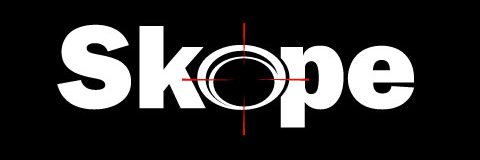Color has a profound impact on human behavior and decision-making, influencing emotions, perceptions, and ultimately, choices. The field of behavioral psychology offers deep insights into why people gravitate toward certain colors over others and how these preferences manifest in various contexts, from marketing to personal expression. Understanding the psychological mechanisms behind color choice patterns is essential for designers, marketers, and anyone interested in human behavior. This article explores the key behavioral psychology principles that drive color preferences and how these patterns influence decision-making.
The Emotional Connection to Color
Colors evoke emotional responses that are often automatic and subconscious. These emotional reactions stem from a combination of cultural associations, personal experiences, and biological factors. For instance, red often triggers feelings of excitement, passion, or urgency, while blue typically induces calmness and trustworthiness. Behavioral psychology explains that these emotional responses to color are linked to how the brain processes sensory information and associates it with past memories and learned meanings.
When individuals are presented with color choices, their emotional state heavily influences their selection. People may prefer colors that match their mood or that fulfill a psychological need at that moment, such as seeking comfort or stimulation. This interplay between emotion and color selection is a central concept in behavioral psychology, demonstrating how deeply intertwined color is with human affect.
Cultural Influences and Learned Associations
While some color responses have biological roots, many are shaped by culture and learning. Behavioral psychology highlights that color meanings are often socially constructed, with cultural context dictating whether a color is perceived positively or negatively. For example, white symbolizes purity and peace in many Western cultures, but it can represent mourning in parts of East Asia.
These learned associations influence choice patterns as individuals internalize cultural norms and expectations. Marketing and advertising leverage this by aligning colors with culturally appropriate messages to guide consumer behavior. Understanding cultural differences in color psychology is vital for predicting how diverse groups will respond to color options.
The Role of Personality in Color Preferences
Behavioral psychology also considers individual personality traits as predictors of color choice patterns. Research indicates that personality dimensions such as extraversion, openness, and neuroticism correlate with specific color preferences. Extroverted individuals might prefer bold, bright colors like red or orange, which align with their energetic and social nature. Conversely, introverts may gravitate toward cooler, subdued tones such as blue or green that reflect their calm and reserved tendencies.
These patterns suggest that color choices are not arbitrary but reflect deeper psychological traits. By understanding the link between personality and color preference, behavioral psychologists can better predict choice behavior and tailor environments or products to match individual psychological profiles.
Contextual Factors and Situational Influences
Beyond stable traits and cultural background, situational context plays a critical role in color selection. Behavioral psychology shows that environmental cues, task demands, and social settings can shift color preferences. For example, a person may choose a bright, attention-grabbing color when trying to make an impression but opt for softer hues when seeking relaxation.
Mood fluctuations also drive dynamic changes in color choice. People experiencing stress might prefer calming colors to reduce anxiety, while those feeling bored may seek vibrant colors to boost stimulation. The contextual sensitivity of color preference highlights the adaptive nature of human behavior, as individuals modify choices based on immediate psychological needs.
Cognitive Biases Affecting Color Choices
Cognitive biases further complicate color choice patterns by influencing perception and decision-making. One such bias is the confirmation bias, where individuals favor colors that reinforce their existing beliefs or preferences. For example, a person who associates green with health may consistently choose green products, overlooking alternatives.
The availability heuristic also plays a role, where recent or memorable color experiences disproportionately impact choices. If someone recently had a positive encounter with a blue object, they might prefer blue in subsequent decisions. These biases show how cognitive shortcuts can shape color choices in ways that may not always align with rational evaluation.
Application in Marketing and Design
The insights from behavioral psychology about color choice patterns are invaluable in marketing and design. Brands carefully select colors that evoke desired emotions, resonate with their target audience’s culture and personality, and fit the situational context of product use. For instance, fast-food chains often use red and yellow to stimulate appetite and create a sense of urgency, while tech companies might favor blue to convey trust and reliability.
Designers also manipulate color combinations and contrasts to guide user attention and influence decision-making. Understanding the psychological underpinnings of color preference allows for the creation of environments, products, and advertisements that align with consumer behavior, enhancing engagement and satisfaction.
Implications for Personal and Social Behavior
Color choice patterns extend beyond consumer behavior into personal and social realms. People use color to express identity, mood, and social status. Wearing certain colors can signal confidence or approachability, while decorating living spaces with preferred hues can affect mental well-being.
Behavioral psychology suggests that by becoming aware of these unconscious influences, individuals can make more intentional color choices that support their psychological goals. Moreover, understanding others’ color preferences can improve social interactions by fostering empathy and better communication at bdg app.
Conclusion
Behavioral psychology reveals that color choice patterns are the result of complex interactions among emotional responses, cultural learning, personality traits, contextual factors, and cognitive biases. Far from being arbitrary, these choices reflect deep psychological processes that influence human behavior in myriad ways. Recognizing the power of color in shaping decisions enables marketers, designers, and individuals to harness its potential effectively. As research continues to uncover the nuances of color psychology, the ability to predict and influence color choices will become increasingly sophisticated, enriching both practical applications and our understanding of human behavior.
